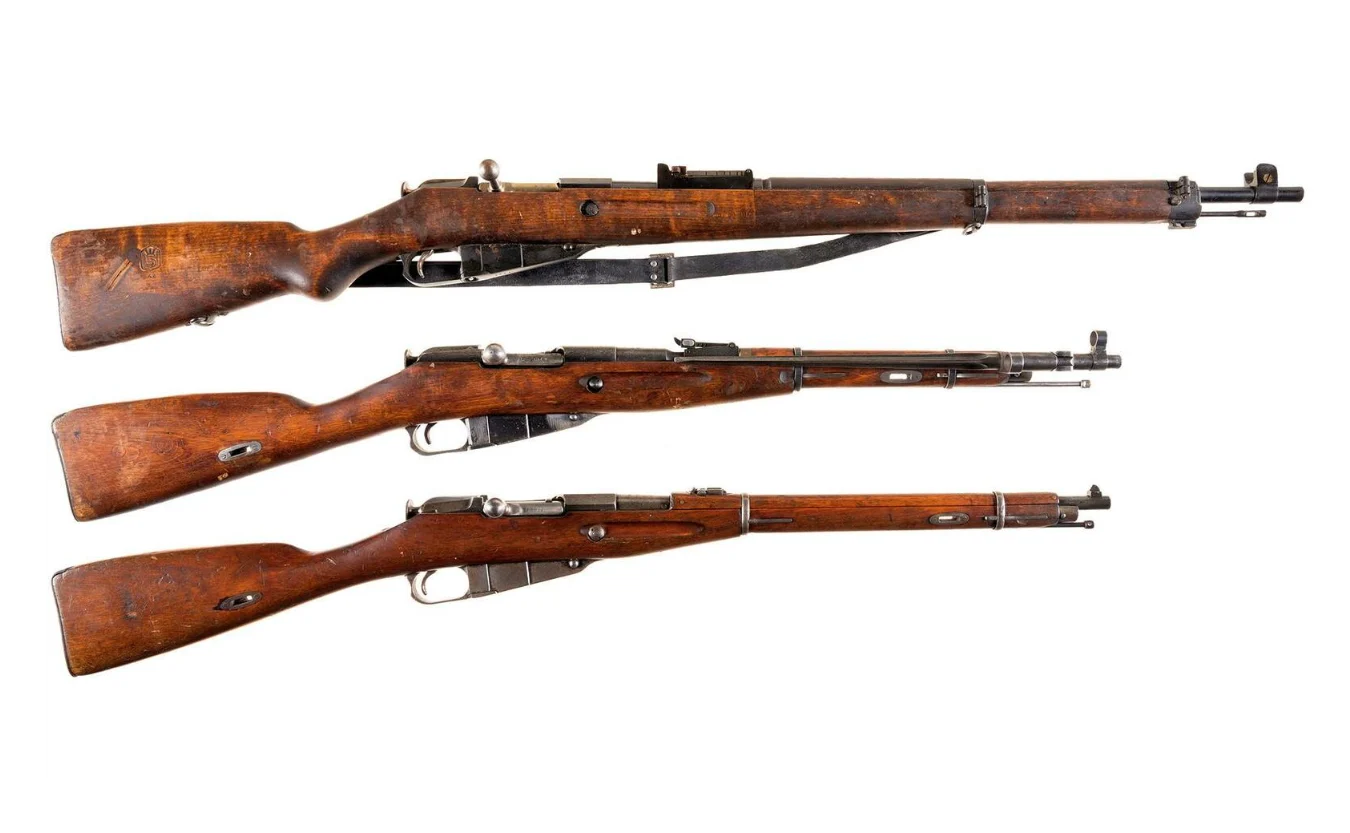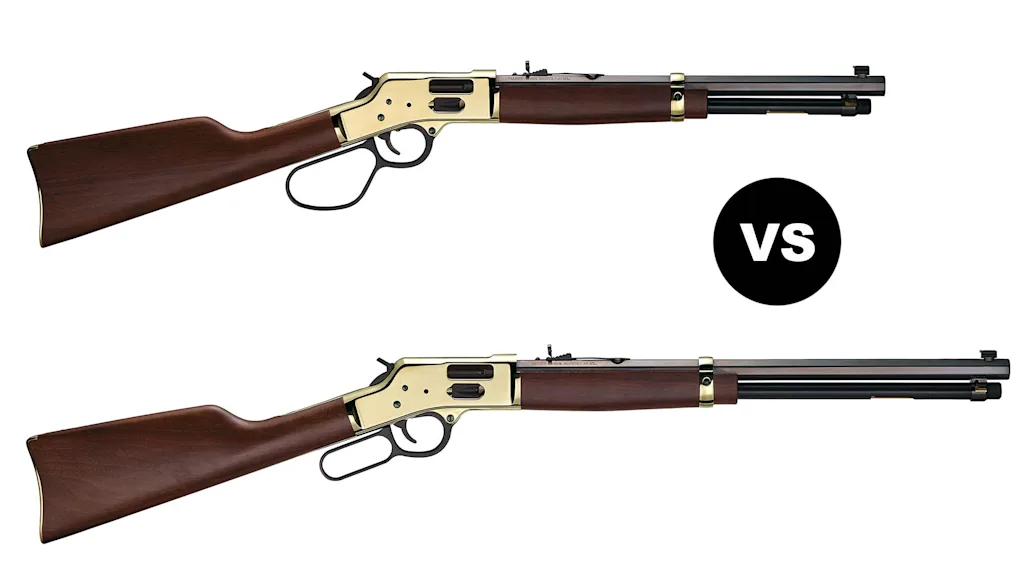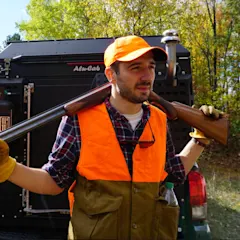Carbines vs rifles are like rectangles vs squares. A carbine is a rifle, but a rifle is not a carbine. A carbine is a shorter version of an existing rifle, and the term has come to be used to describe all short, compact rifles. Because a rifle is defined as a gun with a rifled barrel designed to be fired from the shoulder, carbines are rifles, too. Carbines are handy, easy to carry, and just feel a little livelier in the hand than most full-sized rifles. Still, lopping a few inches off the barrel of a rifle comes with its own drawbacks. It’s important to be aware of how you intend to use your rifle to decide what the perfect barrel length is for your purposes.
Carbine vs. Rifle
A carbine or carbine version of a rifle is a rifle with a shortened barrel. Usually the term is reserved for rifles with barrel lengths under 20 inches. In the U.S., carbines can’t be shorter than 16 inches unless you want to shell out $200 for a tax stamp and do a bunch of paperwork. With a carbine, you may sacrifice muzzle velocity for a shorter barrel. Full-length barrels give some cartridges more time to burn powder, and in the world of rifle shooting, there are ideal lengths for certain cartridges. But carbine fans appreciate the upside of having a more compact and lightweight rifle despite of that drawback.
Carbine vs Rifle: Table of Contents
What is a Carbine?
Why Were Carbine’s Invented?
What are Pistol Caliber Carbines?
Carbine vs. Rifle: Which is Right for You?
Frequently Asked Questions
What is a Carbine?
A carbine is typically shortened version of an existing rifle, and the shortening usually happens at the barrel. That said, “carbine” is also used as a blanket term to describe shorter rifles that may not be based on a longer version of the same make. The term carbine is also used when talking about “pistol caliber carbines,” or short rifles that are chambered for handgun cartridges.

So, how short is short when it comes to carbines vs. rifles? Carbines usually have barrels that are under 20 inches and usually no shorter than 16 inches for civilians. Under U.S. law, rifles with barrels shorter than 16 inches are classified as Short Barreled Rifles (SBR) and require registration with the ATF. In military and law enforcement, there are carbines with 14.5-inch barrels and under.
Why Were Carbine’s Invented?
You’ll have to thank the French for the term carbine. It’s derived from their word for rifleman, “carabinier.” The word was first used in 1693 during the Battle of Neerwinden. The French put what they called carabinier regiments into the field—soldiers mounted on horseback armed with shorter muskets than their foot-bound comrades. The short muskets were handier and easire to fire from a horse.

In the 19th century, when armies started putting rifled barrels into use, there was still a need for carbines in the cavalry. One notable example is the Spencer carbine—a repeating rifle that the Union cavalry used to wreak havoc on the battlefield. Later, in WWII, the U.S. fielded the M1 Carbine for officers and troops that had their hands full with tasks like loading artillery pieces.
Carbines continue to serve armies around the world because they are handy and easy to maneuver in close quarters. Hunters also appreciate them for similar reasons. Because they are lightweight and easy to carry, they’re a favorite of big-woods hunters and those who hunt from ground blinds all over the place.
What are Pistol Caliber Carbines?
The idea of chambering rifles for handgun cartridges is not new. The practice was extremely popular during the 19th century with lever-action rifles. The term “pistol caliber carbine,” is new, though. Essentially, pistol caliber carbines are compact rifles that shoot pistol cartridges. Some even accept magazines for handguns. The term is also used to describe civilian variants of sub-machine guns. These guns are manufactured to fire only in semi-automatic and usually have a 16-inch barrel to comply with ATF rules.

The reason for chambering rifles in handgun cartridges is simple. Longer barrels boost handgun cartridge performance. They have little recoil and are much easier to shoot than larger rifles and handguns. It’s also nice to have both a rifle and handgun chambered for the same cartridge.
Carbine vs Rifle: Which Is Right for You?
Picking a carbine vs. rifle depends on a few things. First, what cartridge do you want to shoot? Larger, high-velocity cartridges, like the 7mm Remington Magnum, need extra long barrels to reach their full potential—otherwise, you’re just taking a bunch of recoil for nothing. It also depends on how you plan to use your rifle. Are you constantly getting in and out of a vehicle? Do you hunt from a box blind? Do you need to maneuver through thick brush? Do you want to use a suppressor on your rifle? If the answer is yes to any or all of these questions, then you should consider a carbine.
At most practical hunting distances, a rifle with a 20-inch barrel and under will do just fine. If you’re a long-range target shooter, though, you probably want a full-sized rifle. Personally, I tend to lean towards carbines no matter what because I like carrying them better. There’s something about a compact handy rifle that just feels right.
Frequently Asked Questions
Is the AR15 a carbine?
Many would say yes, because the AR15 was designed to be a lighter, more-compact version of the AR10. But the AR10 was chambered in .308, and the AR15 is chambered in .223, so some would argue they are different rifles. This practice is not new, though, when it comes to carbines. Many 19th-century rifle makers built carbines in different cartridges than the full-sized rifles the military issued to the infantry. Today, the U.S. military classifies the M16 (a full-auto AR15 with a 20-inch barrel) as a rifle and the M4 (a full-auto AR15 with a 14.5-inch barrel) as a carbine. For us civilians, it’s safe to call all AR15s, no matter the barrel length, carbines.
Is 30 Carbine the same as 223?
Definitely not. They are two different cartridges for two different rifles, and they should not be used interchangeably. They also act completely differently. The 223 usually fires a lighter 55-grain bullet at a much higher velocity than the 30 Carbine. The 30 Carbine fires a 110-grain bullet at a lower velocity.
Is the M4 a carbine or a rifle?
It’s a carbine and a rifle. The military classifies the M4 as a carbine, and everybody else does, too. It is a shortened version of the M16 with a 14.5-inch barrel and a collapsable buttstock. But the M4 is also a rifle because it has a rifled barrel and is designed to be fired from the shoulder. All carbines are rifles.


